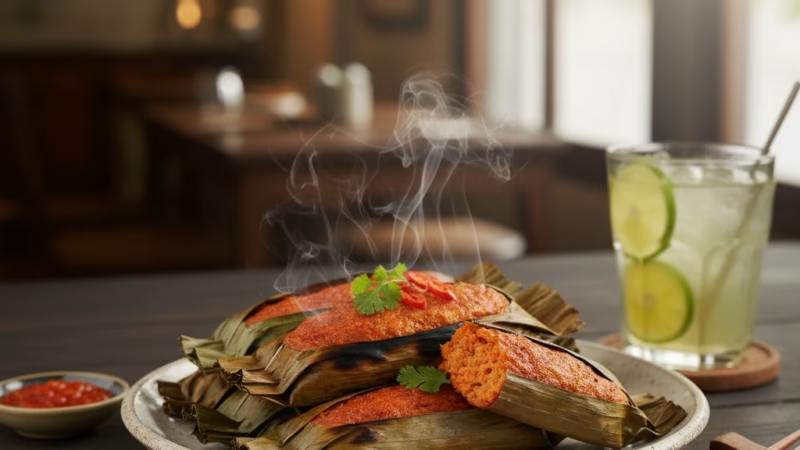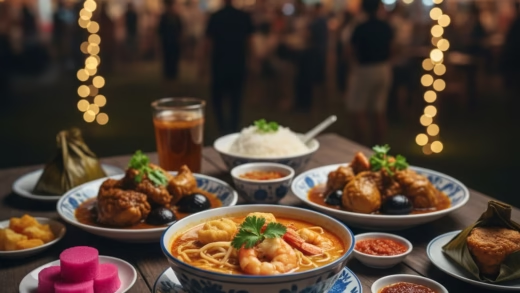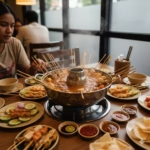Otak-otak

Malysian Food
Otak-otak
Origin
Southeast Asia—Indonesia, Malaysia, and Singapore
Category
Grilled or steamed fish cake / Snack / Street food
Appearance
Wrapped in banana leaves; exterior greenish-brown with grill marks; interior soft and slightly reddish-orange
Ingredients
- Fish paste (mackerel or tenggiri)
- Coconut milk
- Chili, turmeric, shallots, garlic, lemongrass, galangal, kaffir lime leaves
- Egg (optional)
- Banana leaves for wrapping
Preparation
Mix fish paste with spices and coconut milk, spread on banana leaves, fold into packets, then grill or steam until cooked
Equipment
- Knife and cutting board
- Blender or mortar & pestle
- Grill or steamer
- Banana leaves
Variations
- Malaysian style: spicier, grilled
- Indonesian style: steamed, sometimes turmeric-colored
- Singapore style: chili-spiced, grilled over charcoal
Taste
Savory, slightly sweet, mildly spicy, aromatic from herbs and coconut milk
Texture
Soft and smooth inside; slightly firm outside depending on cooking method
Aroma
Fragrant with coconut, spices, lemongrass, and smoky banana leaf
Sound
Sizzling when grilled
Cultural Significance
Popular snack across Southeast Asia; often served during festivals and street food markets
Symbolism
Represents traditional culinary techniques turning simple fish and spices into a flavorful dish
Regional Cuisine
Indonesia, Malaysia, Singapore, with regional flavor adaptations
Social Context
Commonly sold at hawker centers, street stalls, and local markets; enjoyed as casual snack or appetizer
Nutritional Information
High in protein and healthy fats; moderate calorie content
Health Benefits
- Rich in omega-3 fatty acids
- Contains antioxidant-rich spices
- Protein-rich for muscle health
Dietary Restrictions
Not suitable for fish allergy sufferers; contains coconut; gluten-free if no flour added
Allergens
Fish, coconut
Cost
Typically $1–$3 per piece in street markets
Production
Locally made in small batches; fresh daily by vendors
Sustainability
Depends on fish source; banana leaves are eco-friendly
Availability
Widely available in Southeast Asia; hawker centers, markets, specialty restaurants
History
Originated in Indonesia; spread to Malaysia and Singapore; traditional method to preserve fish while adding flavor
Anecdotes
Some family-run stalls are famous for secret spice blends passed down for generations
How to Prepare
- Mix fish paste with coconut milk and spices
- Spread mixture on banana leaves and fold into packets
- Grill or steam until fully cooked
- Serve hot with chili or sweet soy sauce
FAQ
Q: Can I bake otak-otak instead of grilling?
A: Yes, but the smoky aroma will be reduced
Q: Can other fish be used?
A: Firm white fish like snapper or cod works well
Q: How long does it keep?
A: Best eaten fresh; can be refrigerated for 1–2 days















Comments are closed.